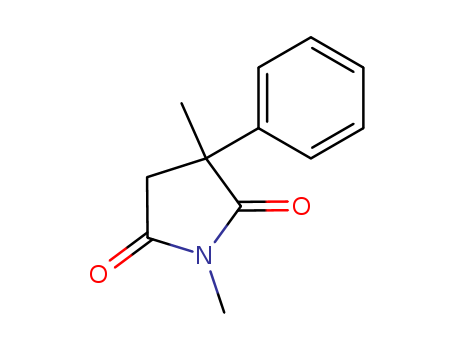- Chemical Name:Methsuximide
- CAS No.:77-41-8
- Molecular Formula:C12H13 N O2
- Molecular Weight:203.241
- Hs Code.:2925190100
- European Community (EC) Number:201-026-7
- NSC Number:760075
- UNII:0G76K8X6C0
- DSSTox Substance ID:DTXSID5023293
- Nikkaji Number:J4.203J
- Wikipedia:Mesuximide
- Wikidata:Q906414
- NCI Thesaurus Code:C47613
- RXCUI:47858
- Pharos Ligand ID:DGZBPJC4XW7Y
- Metabolomics Workbench ID:43651
- ChEMBL ID:CHEMBL697
- Mol file:77-41-8.mol
Synonyms:Celontin;mesuximid;mesuximide;methsuximide;methsuximide, (+)-isomer;methsuximide, (+-)-isomer;methsuximide, (-)-isomer;N,2-dimethyl-2-phenylsuccinimide;Petinutin






